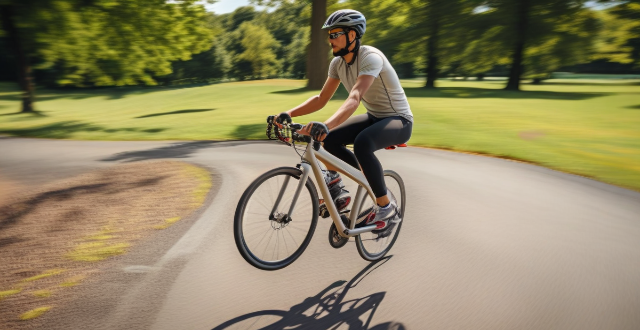Preparing for a long-distance cycling trip involves careful planning, physical training, and packing essential gear. Start by researching your route's terrain and weather conditions, then build up your endurance with training rides and strength exercises. Ensure your bike is well-maintained and equipped with necessary tools and bags. Pack smart with suitable clothing, navigation tools, and a first aid kit. Plan for nutrition and hydration needs, prioritize safety with visibility and communication measures, and learn basic bike repairs. Consider legal and ethical aspects like traffic laws and environmental respect. Prepare mentally for the journey's challenges and establish support systems. Finally, have contingency plans in place for unexpected weather or route changes.

How to Prepare for a Long-Distance Cycling Trip
Embarking on a long-distance cycling trip is an exciting adventure that requires careful preparation. Here's how you can get ready for the journey ahead:
1. Plan Your Route
- Research the terrain: Understand the hills, flats, and potential weather conditions you'll encounter.
- Choose your destination: Decide where you want to go and plot your course using maps or GPS.
- Estimate travel time: Calculate how many miles you can comfortably cover each day and plan your stops accordingly.
2. Train for the Challenge
- Build up endurance: Gradually increase the distance of your training rides.
- Strengthen key muscles: Focus on leg strength with exercises like squats and lunges.
- Practice climbing: If your route includes hills, practice riding up inclines.
3. Equip Your Bike
- Maintenance check: Ensure your bike is in top condition with a thorough tune-up.
- Pack essential tools: Carry a spare inner tube, pump, tire levers, and multi-tool.
- Attach bags and racks: Choose appropriate panniers or frame bags to carry your gear.
4. Pack Smart
- Essential clothing: Pack lightweight, breathable clothing suitable for changing weather.
- Navigation tools: Bring along maps, a compass, or a charged GPS device.
- First aid kit: Include bandages, antiseptic wipes, pain relievers, and any personal medications.
5. Plan for Nutrition and Hydration
- Snacks: Carry energy bars, dried fruit, and other portable snacks.
- Water bottles: Have at least two water bottle cages on your bike.
- Electrolytes: Consider sports drinks or salt tablets to maintain electrolyte balance.
6. Safety First
- Visibility: Wear bright colors and use front and rear lights, even during the day.
- Communication: Carry a cell phone and a charger or external battery pack.
- Emergency contact: Keep a card with emergency contacts and medical information on you.
7. Learn Basic Repairs
- Tire patching: Know how to fix a flat tire quickly.
- Chain maintenance: Learn to lubricate and clean your chain.
- Adjustments on the go: Be able to make minor adjustments to brakes and gears.
8. Legal and Ethical Considerations
- Rules of the road: Familiarize yourself with local traffic laws.
- Respect the environment: Follow Leave No Trace principles and dispose of waste properly.
- Cultural awareness: If traveling internationally, learn about local customs and etiquette.
9. Mental Preparation
- Mindset: Prepare yourself mentally for the physical and emotional challenges.
- Motivation: Set goals and remind yourself why you're undertaking this journey.
- Support system: Connect with fellow cyclists or a support network for motivation and advice.
10. Contingency Planning
- Weather backup: Have plans in place for unexpected weather changes.
- Alternative routes: Identify options if your primary route becomes impassable.
- Evacuation plan: Know how to get back to civilization in case of an emergency.
By following these steps, you'll be well prepared for the rigors of long-distance cycling and can enjoy the open road with confidence.